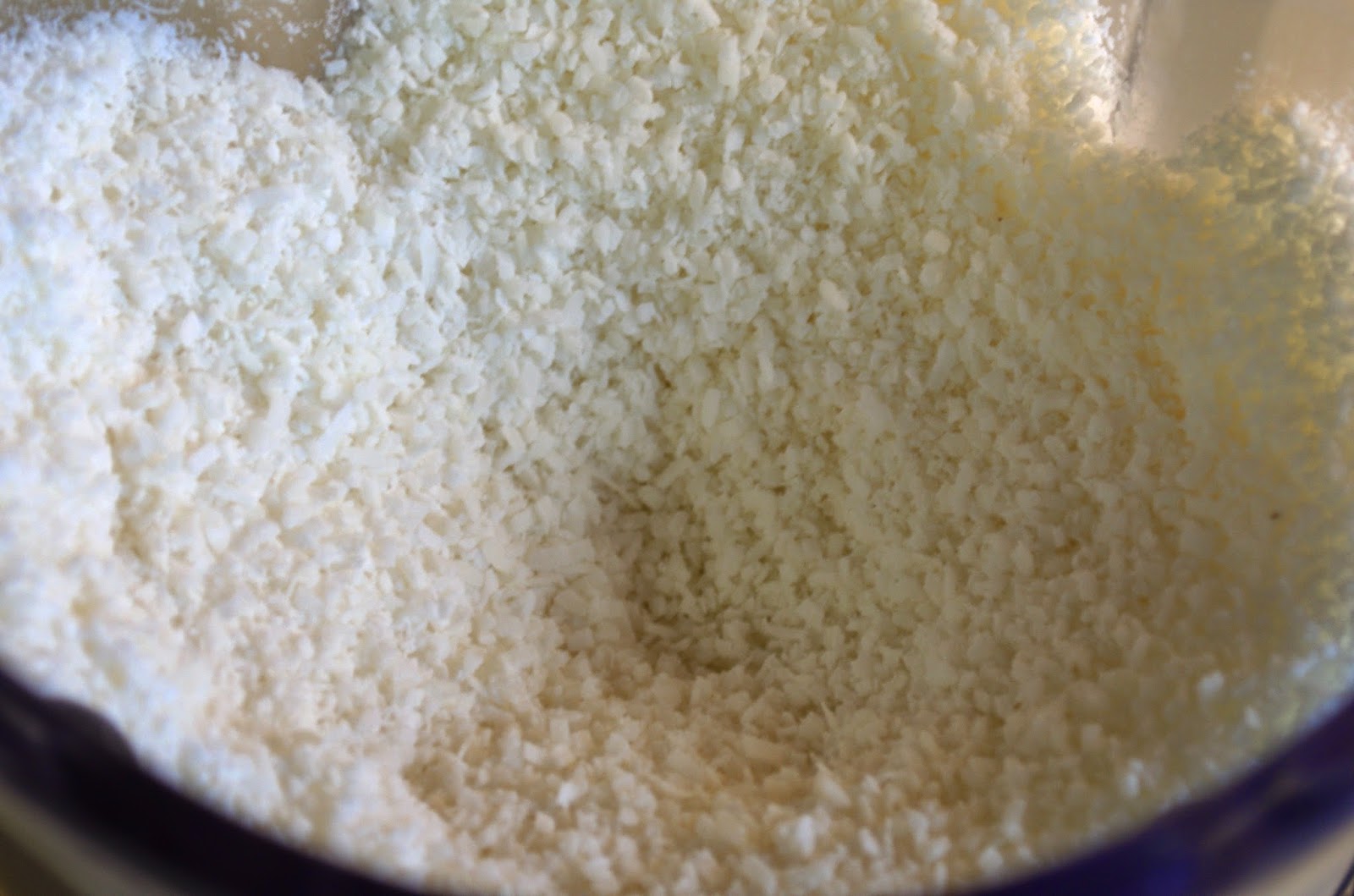Coconut butter is like peanut butter, but made with coconut. It's expensive to buy, but cheap and easy to make, and very tasty.
Most online guides I've read indicate that ordinary blenders (i.e. not in the Vitamix/Blendtech range) can't successfully make coconut butter. I tried it in my KitchenAid (a mid range blender) anyway, and it worked. However, if your blender is a cheapie, you might need to use a food processor.
Coconut butter
Ingredients- Shredded coconut
Method
- Tip the coconut into a food processor or blender. If it doesn't all fit, add as much as will fit, pulse a few times to compress what's there, then add the rest. Keep blending until it's smooth. I've got some photos of the stages here. If your blender/food processor is getting hot, you may need to give it a break for 30 minutes or more, just don't leave it so long that the butter starts to solidify, especially in winter, or you'll probably kill your machine.
Finely chopped coconut
The oil is starting to release. As it progresses here, it may get to the point where the coconut just builds up on the sides and stops falling into the middle. You can turn the blender off, and push the coconut into the middle, or, if you're impatient, you can carefully, use the back end of a wooden spoon to gently nudge the coconut clumps towards the middle, making sure to keep the spoon well clear of the spinning blades. I find that it takes way too much time if I keep turning it off, but if you ruin your blender, I take zero responsibility.
After a bit more time, it will go liquid enough that it no longer needs assistance, but is still very grainy. You can start gradually upping the speed towards maximum speed now.
Then it will start to look smooth. However, you still need to keep blending for a good bit of time after it starts to looks smooth before it actually approaches smooth. Every now and then, stop it and dip a spoon in to taste test the texture. When you're happy with the texture, stop. Mine won't go perfectly smooth, but I guess that's because I'm only using an ordinary blender.
If your blender is struggling to get it to go liquid, apparently adding a bit of melted coconut oil can help, though I can't vouch for it as I've never needed to.
Usage suggestions
- Eat with a spoon
- Spread on toast, I like it on toast with jam
- Eat it with a spoon, did I already say that?
- Add to smoothies
- Use as icing for quickbreads or muffins
- Do not use as a butter substitute for cooking, remember, it's butter like peanut butter, not like dairy butter.
Storage
Transfer to an airtight container and store in the pantry. I find these jars from Ikea to be cheap and the perfect size. In winter it will go hard, in summer it may go completely runny. If it's too hard to use, you can sit it in warm water for a bit. It will separate, so try to stir it back together before you use it. It should keep for at least a year.

.jpg)





No comments:
Post a Comment